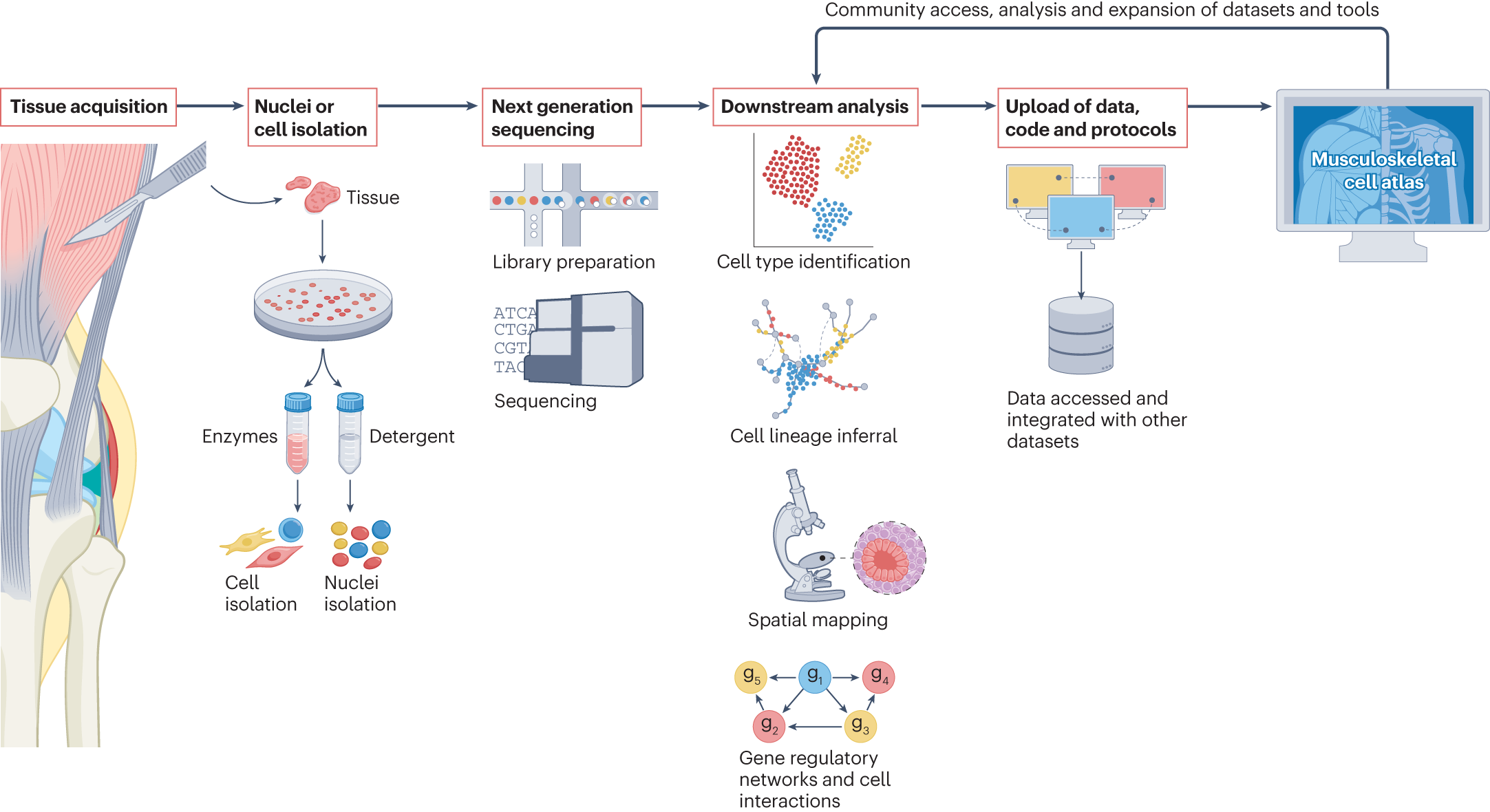A single-cell resolution atlas of the human musculoskeletal system could be transformative to understanding and treating conditions including arthritis, cancer and fractures
NDORMS researchers are leading the development of a roadmap, published in Nature Reviews Rheumatology, that provides a blueprint for building a single-cell resolution map of the human musculoskeletal system. The ambitious endeavour forms part of the international Human Cell Atlas, and aims to identify and spatially locate every cell within the human body.
Musculoskeletal disorders are very common and their prevalence is increasing due to the growing population around the world. Therefore this detailed reference dataset of the cells in our musculoskeletal system will be critical to both understanding normal musculoskeletal function and identifying the cellular basis for disease. It will lay the foundations for the development of new approaches to treating diseases of the joints, soft tissues and bone.
Generalized workflow for generating a single-cell musculoskeletal atlas
To generate a single-cell atlas of the musculoskeletal system, samples are first acquired from musculoskeletal tissues, suspensions of nuclei or cells are created, and single-cell RNA sequencing libraries generated (for example, using droplet-based technology). These libraries are sequenced and analysed to assess for the cell types present (using clustering analysis) as well as their relative spatial locations (for example, using spatial transcriptomics and immunofluorescence), interactions (using tools such as CellPhoneDB) and inferred lineage (using tools such as pseudotime). Logging of relevant donor metadata (such as age, sex, anatomical name of tissue and microanatomical region sampled) and sequencing metadata (such as the platform, code and protocols used), alongside open and accessible sharing of datasets, will enable the integration of data from multiple studies and the delivery of a comprehensive and granular musculoskeletal cell atlas.
Dr Mathew Baldwin, clinical lead of the Musculoskeletal Bionetwork of the Human Cell Atlas says: ‘A representative, freely-accessible, reference dataset of healthy musculoskeletal tissue is a once-in-a-generation resource. Against this foundation the international community will unravel the transcriptional landscapes that define musculoskeletal ageing, repair, disease and treatment response.’
Professor Adam Cribbs, computational lead for the project states: ‘The efficacy of this roadmap hinges on the robustness and scalability of computational pipelines. Achieving a comprehensive atlas necessitates meticulous annotation of cells across diverse tissues. We offer strategic guidance and resources to optimise this critical process.’
Associate Professor Sarah Snelling added: ‘The musculoskeletal system makes up one third of adult human body weight and is incredibly diverse – with hard tissue like bone and soft tissues like cell-rich muscle and cell-poor cartilage. In the roadmap we have highlighted the challenges the community faces in working with such tissues, and described the key considerations that the musculoskeletal community should bear in mind when embarking on atlasing efforts. Critically, there is a fundamental need for open sharing of protocols, code and know-how to ensure musculoskeletal maps are delivered efficiently, effectively and accessibly for all researchers globally.’
NDORMS has established itself as a hub in musculoskeletal cell atlasing with expertise and publications that span the cartography of musculoskeletal tissues including tendon, capsule, bone, muscle and synovium across the human lifespan in both UK and global populations.
Source – University of Oxford
Baldwin M, Buckley CD, Guilak F, Hulley P, Cribbs AP, Snelling S. (2023) A roadmap for delivering a human musculoskeletal cell atlas. Nat Rev Rheumatol [Epub ahead of print]. [article]





